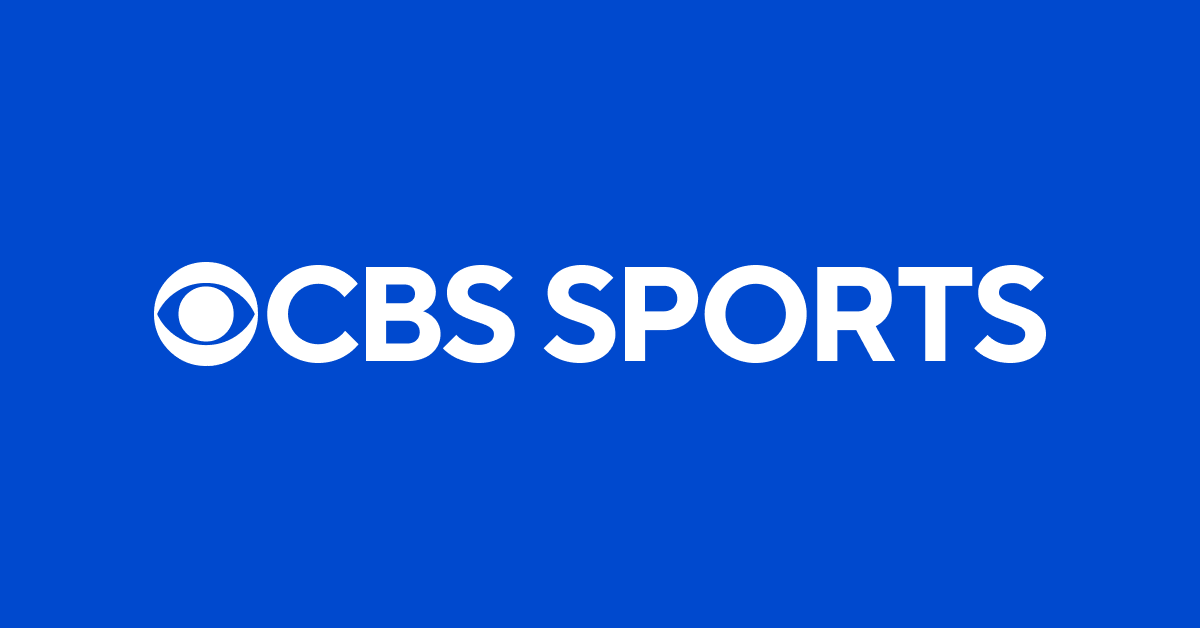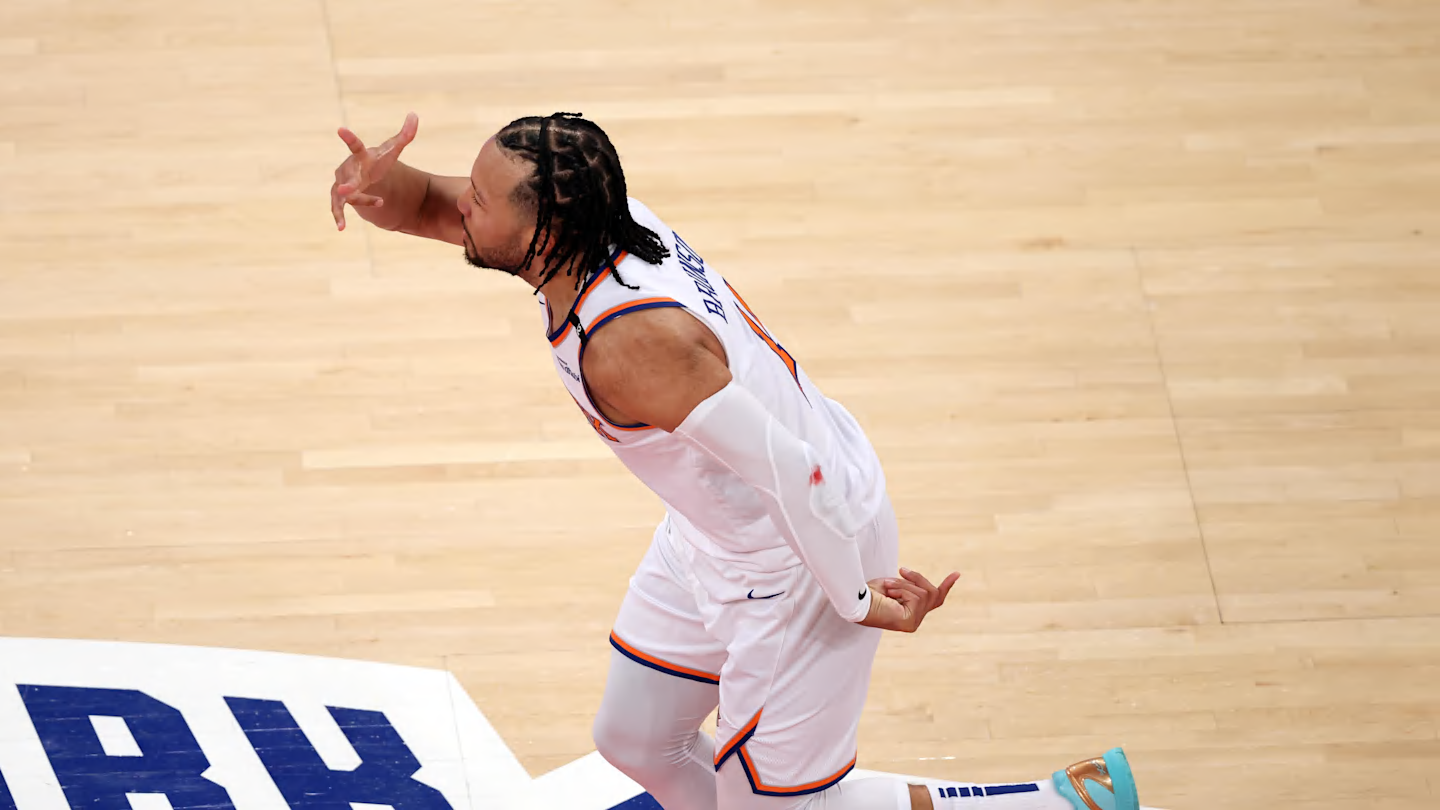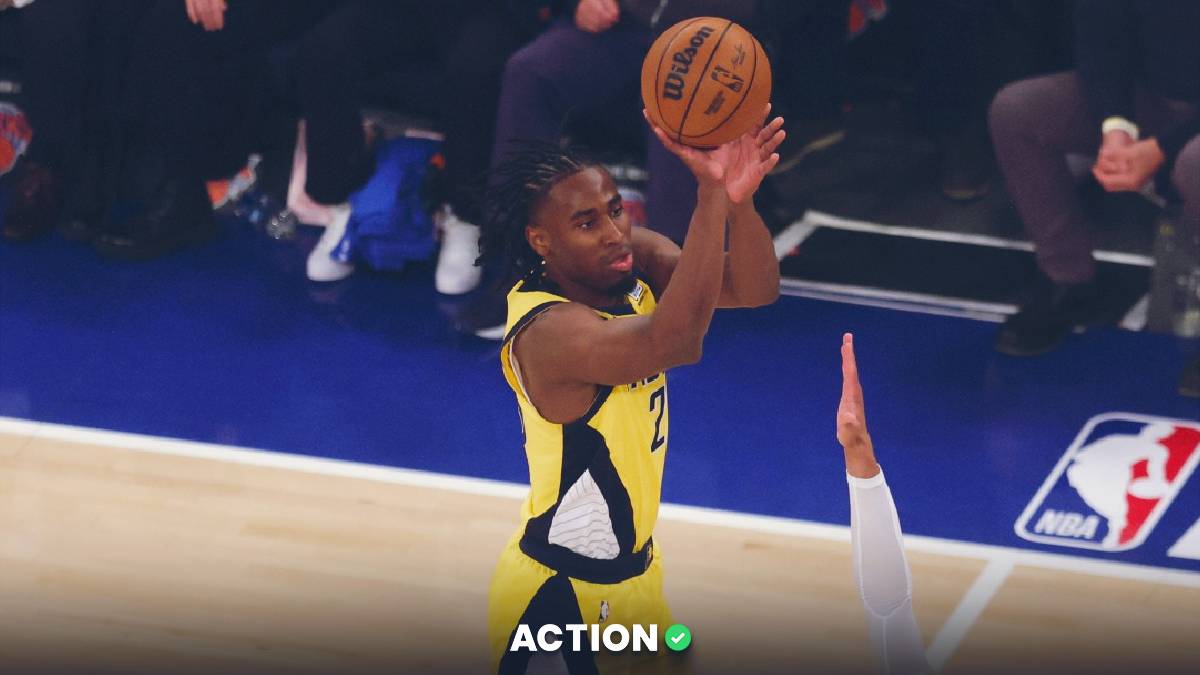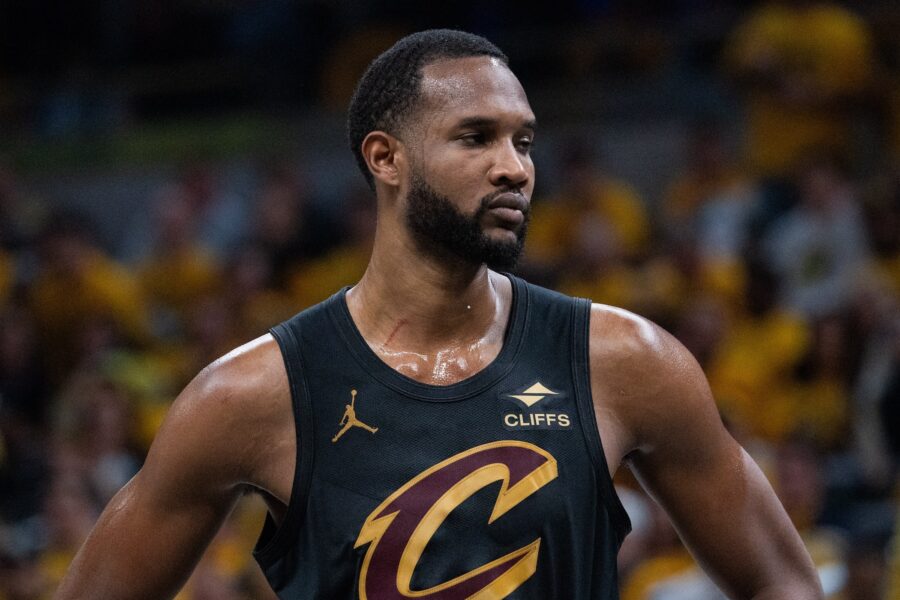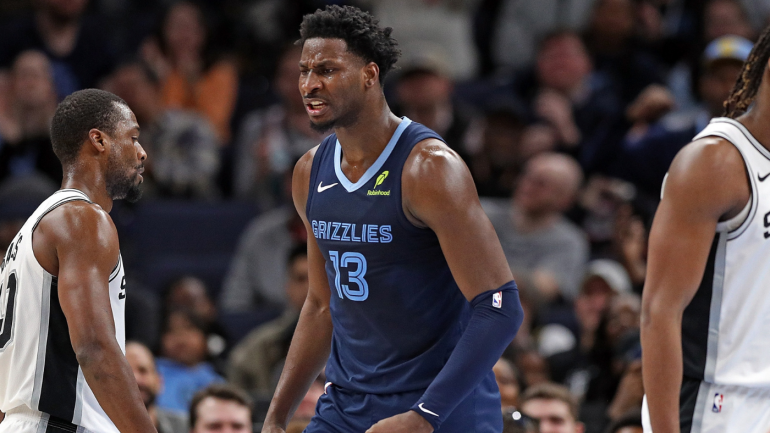
For most of NBA history, the announcement of All-NBA teams was a relatively low-stakes event. They existed for bragging rights and posterity. They boosted Hall of Fame cases and gave fans a quick snapshot of who mattered in a given season.
But now? It is, in this vicious salary cap environment, one of the most important days of the year. For many superstars, it is the day that determines how much money they are eligible to earn. Typically, a player’s max salary depends on their experience. Players with between four and six years of experience can start contracts at 25% of the salary cap. When they reach between seven and nine years of experience, that figure jumps up to 30%, and at 10 or more seasons, it peaks at 35%.
However, if a player reaches certain criteria, they can effectively jump ahead to the next tier, allowing players with fewer than seven years of experience to start a new contract at 30% and fewer than 10 to kick off a deal at 35%. When you factor in the 8% annual raises that can be baked into these contracts, the difference here can be absolutely enormous.

The three relevant criteria here are MVP, Defensive Player of the Year, and the one that most frequently applies: All-NBA. The first two had already been awarded. On Friday, the All-NBA teams were named. So, with this year’s awards now settled, we can start to dig into the financial implications of the voting. So let’s talk about who made money this season and who lost it.
A number of 2026 free agents have lost out on supermax deals over the past few months. Luka Dončić was eligible until February, when he was traded to the Los Angeles Lakers. A player can only sign a supermax with the team that drafted him or a team that trades for him in the first four years. So the Dallas Mavericks didn’t just dump him in February, they took money out of his pocket as well. Trae Young potentially could have put a supermax on the table with an All-NBA selection (he would have needed one next year as well), but he didn’t make the cut.
However, Dončić and Young aren’t exactly hurting here because of the way standard veteran extensions work. A typical veteran extension can offer a 40% raise in the first year of a new deal. For players like Dončić and Young, who are currently on max contracts anyway, that 40% bump takes them comfortably up to their max. Where the 40% rule falters is with players who deserve max money or something close to it, but aren’t earning in that vicinity on their present deals.
This is the case for Jaren Jackson Jr. The rookie extension he signed in 2021 not only started below the max, but actually reduced his salary each year. Next year, he is set to make only around $23.4 million. That means a 40% raise wouldn’t even take him to $33 million in the first year of his new deal, and as that starting point determines the size of a player’s annual raises, the total value of a new contract for him on this basis would be well below market for an All-Star and former Defensive Player of the Year.
The supermax would have solved this problem immediately. If a player is eligible, all other extension rules go out the window. Jackson was considered nearly a lock midway through the season, but as the Grizzlies faded down the stretch, he ultimately wound up getting left off of the final team.
Now, under normal circumstances, this would have created a very scary situation for the Grizzlies. Most teams who can’t extend impending free agents a year in advance face the very real threat of losing them for nothing. This fear, to some extent, still exists for the Grizzlies. There is a lot of cap space floating around in the summer of 2026, and some of the teams that hold it (we’re looking at you, Lakers) would be pretty enticing fits for Jackson. But Memphis foresaw this possibility and planned accordingly.
One workaround to veteran extension limits is to create cap space. When a team has cap space, it can renegotiate a player’s existing contract before giving him an extension on top of it. This is what the Utah Jazz did for Lauri Markkanen last summer: They bumped his 2024-25 salary up to the max, and then gave him a hefty extension on top of that to avoid the 40% limit. So, in anticipation that Jackson might miss out on All-NBA, the Grizzlies used their 2025 first-round pick to dump Marcus Smart. That put them in a position in which they can create roughly $17.5 million in cap space this offseason to pay Jackson.
Now, there are caveats here. The first is that creating that cap space means renouncing all of their own free agents. So long, Luke Kennard and Santi Aldama. Those are valuable players, and losing them for nothing would hurt the Grizzlies meaningfully. This is part of why All-NBA was so important for Jackson and Memphis. It would have allowed the Grizzlies to re-sign him without making these drastic cuts to their immediate roster.
Second, and perhaps more importantly, a $17.5 million bump doesn’t take Jackson up to his max. It would get his salary up to around $40 million. Jackson’s max based on the projected salary cap would be above $46 million. Would he even be willing to sign for less? Over the total life of a new deal, that would cost him tens of millions of dollars. Signing now offers security, but waiting a year offers vastly more upside. Even if he plans to stay in Memphis, he could re-sign as a 2026 free agent using Bird Rights for his 2026-27 max — a projected $51 million or so. That would also give him the option to explore free agency.
It’s a risk-reward calculus for him at that point, but it’s one the Grizzlies would be weighing as well. Say Jackson elected to play out the 2025-26 season without extending. Would the Grizzlies just decide to trade him to avoid gambling on free agency? It’s entirely possible. An All-NBA selection could have solved all of this. Instead, Jackson becomes one of the most interesting players of the offseason.
Jackson’s situation is complicated. Cade Cunningham’s isn’t. Last offseason, he signed the standard Derrick Rose Rule max contract, guaranteeing him five years starting at 25% of the cap, but jumping up to 30% if he made an All-NBA Team. Well, Cunningham was a third team choice on Friday, so he made the cut. That’s the difference between $224 million and $269 million on his upcoming rookie extension.
Cunningham wasn’t the only 2021 draftee affected, though. Evan Mobley also made the jump from $224 million to $269 million, though he didn’t need All-NBA to do it. His Defensive Player of the Year trophy clinched his raise. This creates some significant cap issues for the Cavaliers, who are suddenly far above the second apron, but hey, at least Mobley is worth it.
Two other 2021 draftees had Rose Rule bumps built into their contracts, but didn’t ultimately earn them. Scottie Barnes was never a serious All-NBA contender, so he settles in at that $224 million 25% max figure. Franz Wagner actually had a realistic shot for a few months. However, a midseason injury took him out of the running, so he’s stuck at $224 million. Fortunately, neither will starve at those prices.
3. Good news and bad news for OKC
Cunningham and Mobley used their performance in their fourth seasons to earn those bumps from 25% to 30% in their new contracts. What Jalen Williams did was arguably more impressive. He just made an All-NBA Team in his third season, beating the two of them by a year. However, Williams is not yet eligible for a Rose Rule bump because of the wording of the rule.
For a player to be eligible through All-NBA selection, he has to make an All-NBA team in the season before the new deal begins or in two of the previous three seasons. While Williams is eligible to negotiate a rookie extension this summer, the deal wouldn’t technically begin until the 2026-27 campaign.
In other words, this season wouldn’t have mattered unless he’d won MVP, which covers a three-year period. If he makes All-NBA again next year he will be eligible, but for now, he’s stuck signing a contract formatted similarly to the one Cunningham signed. It will start at 25% but include an escalator up to 30% if he makes an All-NBA team next year.
So that’s the good news for the Thunder, at least for the time being. What’s the bad news? Well, it’s not bad per se, just a bit pricey. Shai Gilgeous-Alexander won MVP on Wednesday. That locked in his supermax eligibility for an extension he will presumably sign next offseason. It will be worth — take a deep breath, folks — $380 million over five years. That’s $76 million per year, a figure that gets relatively close to $1 million per game.
Obviously, that is an enormously expensive contract even if it’s worth it for an MVP. Things get even pricier for the Thunder if Williams (or Chet Holmgren, for that matter) manes an All-NBA team next year as well. But the Thunder built their team with this jump in mind. They are entirely ready to start paying their stars. Isaiah Hartenstein has a team-option for the 2026-27 season, so he can be excised as needed. The Thunder have hoarded draft picks so that they can cycle in new, cheap depth as their role players get expensive. Don’t be surprised if in the next year or two they explore deals for players like Hartenstein, Lu Dort or Alex Caruso for precisely this purpose. The Thunder want to build a sustainable winner. They presumably have a plan to do so even once their three best players get expensive. Awards season this year just made those players even costlier.
Anthony Edwards is still four years away from free agency. He’s not in any rush to make contractual decisions. However, next summer he will hit the three-year anniversary of the signing of his current deal, which makes him eligible for an extension if he wants one. It probably wouldn’t make sense to sacrifice flexibility for a standard extension. However, if he can bake the supermax raise into one, the financial rewards are probably worth it.
Edwards isn’t there quite yet. However, by making an All-NBA team this season, he can become eligible for a supermax extension next season if he repeats as an All-NBA choice. That extension, according to Yossi Gozlan, would pay him $360 million over four years. That’s $90 million per year, well north of $1 million per game.
This is what the new TV deal is expected to do to player salaries. The new CBA stipulates that the cap can rise up to 10% every year. The money from that new TV deal almost ensures that it will, and since max salaries are a percentage of the cap, they also rise by 10% every year. That makes these All-NBA selections more important with each passing year. It won’t be long before they are quite literally worth hundreds of millions of dollars.
